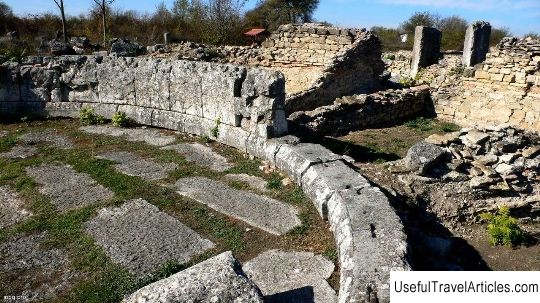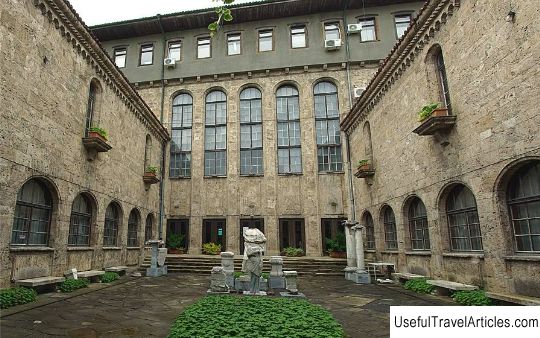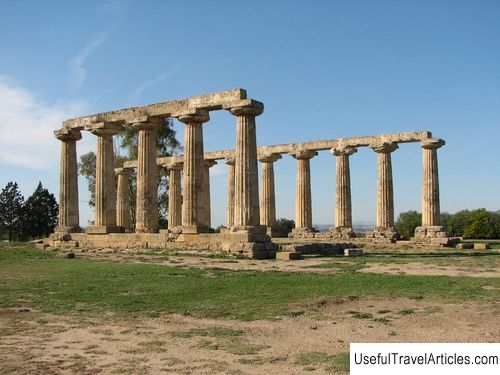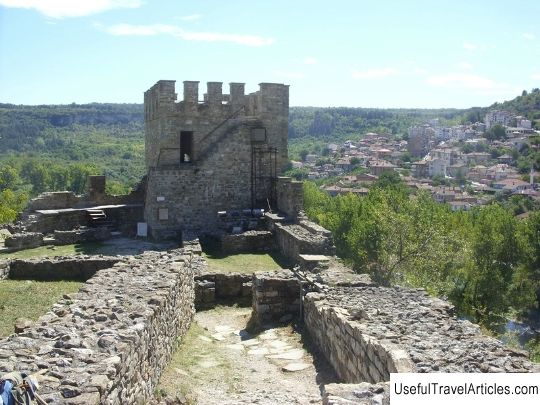Ruins of the ancient city Nikopolis ad Istrum description and photos - Bulgaria: Veliko Tarnovo

Ruins of the antique city Nikopolis ad Istrum description and photos - Bulgaria: Veliko Tarnovo. Detailed information about the attraction. Description, photos and a map showing the nearest significant objects. Photo and descriptionNicopolis ad Istrum is an ancient ancient city founded in the second century by the order of the Roman Emperor Trajan in honor of the victory of the Romans over the Dacian tribes in 106 AD. The city was located at the intersection of important trade routes. Presumably, the city was destroyed in the 7th century by the Avars. In the 9th century, the city was revived under the name Nikopol. It existed until the 13th century. Archaeological excavations began here in the early 20th century, in 2007 they resumed again. Now the ruins are accessible for tourists. The ruins are located on a low plateau near the Rositsa River near Veliko Tarnovo, just 18 kilometers north, on the way to the city of Ruse. The Romans built Nikopolis ad Istrum according to a clear plan according to an orthogonal system - all the streets of the city were straight, were located according to the cardinal points and intersected at an angle of 90 °. The city covered an area of about 30 hectares. Initially, there was no fortress wall here, but when a threat of barbarian raids arose at the end of the second century, it was nevertheless erected. On each side, gates were built, the main entrance to the city was considered to be the western one, looking towards Rome. As a result of the work of archaeologists, it was established that the population of the city was very diverse in ethnic and religious composition. The ruins of various temples were found, as well as burials, which were arranged in accordance with the rituals of various ancient religious cultures. The central square, colonnade, theater, public buildings, trading places, bathhouse were excavated. Houses were built of white stone and decorated with plant and animal ornaments. Scientists found that some buildings had heated floors, and there was a special heated path for winter walks. In addition, a unique water supply system was created in the city, the longest water conduit was 27 kilometers. The city minted its own coins, archaeologists discovered about a thousand different types of bronze coins, which depict the walls, buildings of the city, and also various deities. A bronze bust of the Emperor Gordian III, statues of the gods Eros, Asclepius, Fortune and the muse Cleo were found. The finds are stored in Veliko Tarnovo in the archaeological museum. the longest water conduit was 27 kilometers.The city minted its own coins, archaeologists discovered about a thousand different types of bronze coins, which depict the walls, buildings of the city, as well as various deities. A bronze bust of the Emperor Gordian III, statues of the gods Eros, Asclepius, Fortune and the muse Cleo were found. The finds are stored in Veliko Tarnovo in the archaeological museum. the longest water conduit was 27 kilometers.The city minted its own coins, archaeologists discovered about a thousand different types of bronze coins, which depict the walls, buildings of the city, as well as various deities. A bronze bust of the Emperor Gordian III, statues of the gods Eros, Asclepius, Fortune and the muse Cleo were found. The finds are kept in Veliko Tarnovo in the archaeological museum.      We also recommend reading Villa d'Este description and photos - Italy: Lake Como Topic: Ruins of the ancient city Nikopolis ad Istrum description and photos - Bulgaria: Veliko Tarnovo. |




